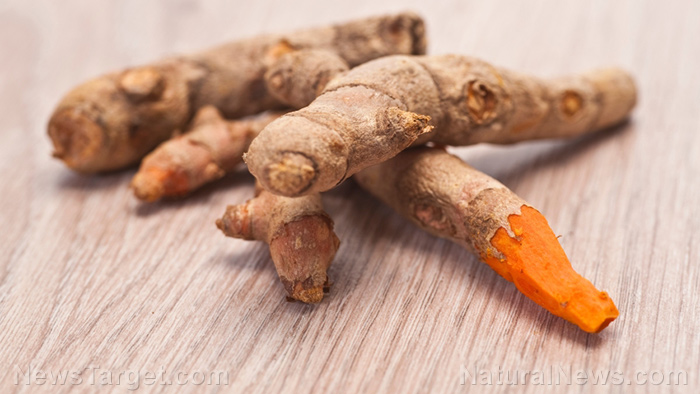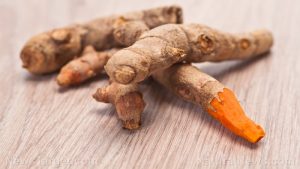
Turmeric – sources, health benefits, nutrients, uses and constituents at NaturalPedia.com
Friday, June 30, 2017 by Jhoanna Robinson
http://www.naturalpedia.com/turmeric-sources-health-benefits-nutrients-uses-and-constituents-at-naturalpedia-com.html

Turmeric, a mildly-flavored component of curry, belongs to the ginger family and hails from southwest India. Its deep-orange color is reminiscent of saffron.
It commonly comes in powder form and is used as a spice, especially in Indian and Pakistani cuisine. Middle Eastern cuisine also has its share of turmeric-infused dishes. It also has its aesthetic uses; for instance, it can be used to dye cloth.

List of known nutrients
- Calcium
- Carbohydrates
- Cineole
- Copper
- Curcumin
- Iron
- Magnesium
- Manganese
- Potassium
- Pyridoxine
- P-Cymene
- Turmerone
- Vitamin C
- Zinc
- Zingiberene
Medicinal uses for turmeric
Curcumin, a chemical compound that is produced by turmeric, can lower the level of inflammation-causing enzymes in the body, and as such can be used for treating inflammatory bowel conditions such as Crohn’s disease and ulcerative colitis.
In animal models, turmeric’s effects included boosted fatty acid oxidation, improved insulin sensitivity, decreased body weight, lowered trygliceride synthesis, and increased basal metabolic rate. Curcumin also has anti-amyloid properties that aids in delaying the onset of Alzheimer’s disease.
Turmeric can also prevent plaque buildup in the arteries.
Pyridoxine, an essential vitamin that can be found in turmeric, is good for treating blood conditions such as homocystinuria, radiation sickness, and sideroblastic anemia. Turmeric also contains potassium, which regulates heart rate and blood pressure.
Body systems supported by turmeric
Studies show that turmeric can decrease instances of bloating and gas in people who are afflicted with indigestion.
Turmeric can help fight cancer. It can prevent the growth – and sometimes totally destroy – of prostate cancer cells and radiation-induced tumors.
People who suffer from joint pains and rheumatoid arthritis can find relief if they incorporate turmeric in their daily diet.
Ways to use turmeric
Turmeric can be a wonderful addition to already tasty sauces like curry or barbecue rub as they provide it provides that extra zest. It can also be used to make salad dressing – those that include oil or vinegar. Turmeric is also good for marinades and soups.
Turmeric is used as additional flavoring in canned beverages, baked products, dairy products such as ice cream and yogurt, cake icings, yellow cakes, orange juice, biscuits, popcorn, and cereals. It is also drunk as tea in Okinawa and other Asian countries.
Turmeric is also used as a supplement in powder-containing capsules, fluid extract, and tincture. Turmeric’s potency in these products is heightened when combined with bromelain, a protein that comes from pineapples.
For beauty aficionados, turmeric can be an essential ingredient for making face masks, acne gel, or for spicing your soap. It can also be used as a topical agent to treat wounds.
For more ways to use turmeric, visit this link.
Where to learn more
- Turmeric Found to Be Beneficial for Lung, Liver and Colon Health
- The Miraculous Turmeric – Traditionally Used for At Least 23 Health Conditions
- Turmeric Recipes for Skin Care
- Turmeric improves skin health, protects from UVB radiation damage and aging, concludes Japanese study
- Turmeric is the Anti-Aging, Anti-Oxidant, Anti-Inflammatory Super Spice
Summary
Turmeric can prevent plaque buildup in the arteries.
Studies show that turmeric can decrease instances of bloating and gas in people who are afflicted with indigestion.
Turmeric can help fight cancer.
People who suffer from joint pains and rheumatoid arthritis can find relief if they incorporate turmeric in their daily diet.
Sources include:
Tagged Under: Tags: turmeric





